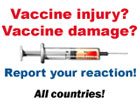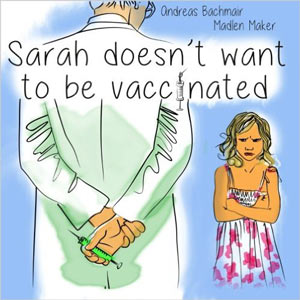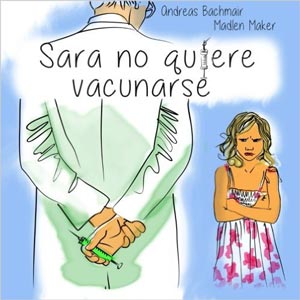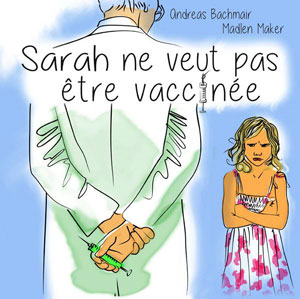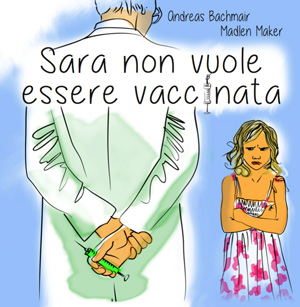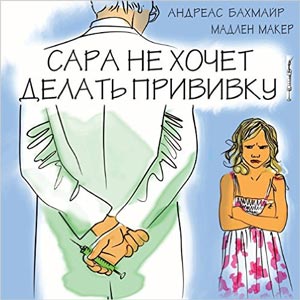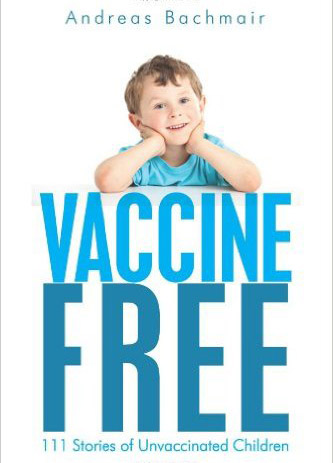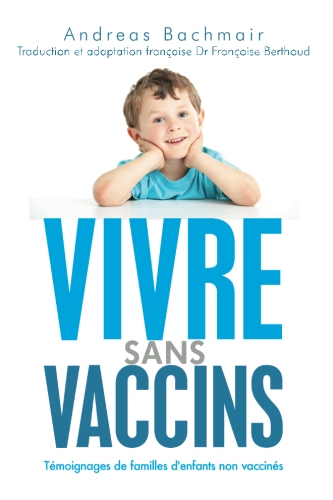Meningococcal vaccination
Vaccine
In Germany there were only vaccinations against meningococcal for certain serotypes, i.e. groups A, C, Y and W 135. Since 2013 there is a vaccination against serotypes B, which is responsible for more than 75% of all meningococcal infections.
Various vaccines against mengingococci have been approved in Germany:
Bexsero®:
Composition: 1 dose contains:
Recombinant Neisseria meningitidis group B NHBA fusion protein 50mcg
Recombinant Neisseria meningitidis group B NadA protein 50mcg
Recombinant Neisseria meningitidis group B fHbp fusion protein 50mcg
Outer membrane vesicles (OMV) from Neisseria meningitidis group B strain NZ98/254 measured as amount of total protein containing the PorA P1.4 25 mcg
Further additives: aluminium hydroxide (0.5 mg Al3+)
The vaccine is produced in E. coli cells by recombinant DNA technology
Mencevax ACWY meningococcal-polysaccharide-vaccine
Composition: 1 dose (0.5 ml) contains the following: Neisseria-meningitidis-polysaccharide of group A, Group C, Group W135 and Group Y 0.05 mg each.
Further additives: Lactose, 0.9% sodium chlorid solution.
Meningitec®
Composition: 1 dose (0.5 ml) contains: Meningococci oligosaccharide of serogroup C 10 µg, conjugated with approx. 15 µg of Corynebacterium diphtheriae CRM197-Proteins.
Further additives: Aluminiumphosphate, sodiumchloride, water for injection purposes
Meningococci-vaccine A+C Mérieux®
Composition: 0.5 ml (1 dose) contains: clar. Polysaccharide of Neisseria meningitidis group A + group C 50 µg each.
Further additives: Lactose, water for injection purposes, Natriumchloride, Natrium dihydrogenphosphate 2H2O, sodium monohydrogenphosphate.
Menjugate®
Composition: 1 dose (0.5 ml) contains: Mengococcal C-Oligosaccharide of Serogroup C 10 µg conjugated on Corynebacterium diphtheriae CRM197-Protein 12,5-25 µg. Further additives: Aluminiumhydroxide (Adjuvans) 1 mg, Mannitol, Natrium dihydrogenphosphaet 1H2O, sodium monohydrogenphosphate 7H2O, sodium chloride, water for injection purposesNeisVac-CTM
Composition: 0.5 ml (1 dose) contains: Neisseria Meningitidis serogroup C (strain C 11) Polysaccharide (de-O-acetyliert) 10 µg bound to Tetanustoxoid 10 to 20 µg, adsorbed on Aluminiumhydroxid 0.5 mg Al3+. Further additives: sodiumchloride, water for injection purposesThe conjugated vaccines are for children who are younger than 18-24 months as the polysaccharide vaccine only has an insufficient effect on them.
Immunity
Vaccine protection is only short-term. In England a vaccine campaign was launched with Meningitec in November 1999.
The protective effect that was calculated for end 2000 was 97% for adolescents if one took the vaccination rate into consideration (CI 77-99%) and 92% (CI 65-98%) for babies (Lancet, 2001, Vol 357, p 195-6).Immunity disappears after months to a few years. Additionally, the antibody formation in the most endangered group, children who are younger than 2 years of age and who live in poor social conditions, is the worst.
Furthermore there are only vaccinations against certain serotypes in Germany, i.e. groups A, C, Y and W 135. There is no vaccination for serotype B which is responsible for more than 75% of all meningococcal infections. Only 25% at most of meningococcal infections can be avoided.
It should be expected that the meningococcal groups that are not taken account of in the vaccines will refill the gap that arises (AT (arznei-telegramm): Neue Konjugat-Impfstoffe Prevenar und Meningitec. AT 2001, 4: 38, - Diggle MA, Clarke SC: Increased genetic diversity of Neisseria meningitidis isolates after the introduction of meningococcal serogroup C polysaccharide conjugate vaccines. J Clin Microbiol 2005, 43(9): 4649–4653). Therefore the frequency of the disease and the gravity of the disease could rise again due to the fact that the immune system of the population on hand is not acquainted with it. In England in 2004, five years after meningococcal vaccinations were introduced, mortality reached level of the years before the vaccination was introduced (Independent Online: Meningitis vaccinations 'blamed' for rise in deaths. 20.9.2004, http://www.whale.to/a/men59.html).
Side effects, vaccine complications and vaccine damages of meningococcal vaccination in babies, children and adults
Problematic side effects of the vaccines are mainly impairments of the central nervous system such as crying, moodiness, dazedness, insomnia, which occur relatively frequently after meningococcal vaccinations. These side effects indicate that the brain is directly involved. Long-term effects have not been investigated yet!
A trial with the new conjugated meningococcal C vaccine was performed at the Sheffield Children's Hospital. In this trial 2796 children aged 2 months were included and in addition to the routine vaccination against meningococcal C they were vaccinated every month (in other words at 2 months, 3 months and 4 months). In total 1804!!! vaccine (?) reactions were observed, of which only 49 were assigned to the vaccination because they were the only reactions where it was assumed to be probable that they had to do with the vaccination. Furthermore, 4 children developed serious reactions such as hypotonia, loud screaming, rash and irritability(Safety of a new conjugate meningococcal C vaccine in infants.Lakshman R, Jones I, Walker D, McMurtrie K, Shaw L, Race G, Choo S, Danzig L, Oster P, Finn A.Arch Dis Child. 2001 Nov;85(5):391-7.)
Bexsero:
Infants and children (up to 10 years of age)
Metabolism and nutrition disorders Very common: eating disorders
Nervous system disorders
Very common: sleepiness, unusual crying Uncommon: seizures (including febrile seizures)
Vascular disorders
Uncommon: pallor (rare after booster) Rare: Kawasaki syndrome
Gastrointestinal disorders
Very common: diarrhoea, vomiting (uncommon after booster)
Skin and subcutaneous tissue disorders
Very common: rash (uncommon after booster) Uncommon: eczema, urticaria
General disorders and administration site conditions
Very common: fever (=38°C), injection site tenderness (including severe injection site tenderness defined as crying when injected limb is moved), injection site erythema, injection site swelling, injection site induration, irritability
Uncommon: fever (=40°C)
Adolescents (from 11 years of age) and adults
Nervous system disorders Very common: headache
Gastrointestinal disorders Very common: nausea
General disorders and administration site conditions
Very common: injection site pain (including severe injection site pain defined as unable to perform normal daily activity), injection site swelling, injection site induration, injection site erythema, malaise
Musculoskeletal and connective tissue disorders Very common: myalgia, arthralgia
Clinical efficacy
The efficacy of Bexsero has not been evaluated through clinical trials. Vaccine efficacy has been inferred by demonstrating the induction of serum bactericidal antibody responses to each of the vaccine antigens
In the package insert states that prophylactic use of paracetamol to reduce the incidence and severity of fever without affecting the immunogenicity of either Bexsero or routine vaccines is recommended.
Meningitec® :
The following is a list of side effects that were observed in clinical trials:
In all age groups reactions at the injection site (including redness, swelling and sensitivity to pressure/pain) were very prevalent. Normally, however, these are not clinically significant. Redness and swelling of at least 3 cm and sensitivity to pressure which limits ability to move more than 48 hours were not observed frequently. Frequently there is fever of 38.0°C but normally it does not exceed 39.1°C, particularly in the older age groups. In children and babies symptoms such as crying, irritability, dazedness, insomnia, anorexia, diarrhea and vomiting occurred frequently after the vaccination, but there is no indication that these symptoms have more to do with Meningitec as such than with the other vaccinations that were administered at the same time, particularly DTP vaccine.
Frequent side effects which possibly have to do with the vaccine in adults include headaches and myalgia, in younger children irritability and sleepiness.
Side effects that were observed after market introduction (all age groups) include the following: Very rare (>0.01% and <0.1%) fever cramps, impairment of the immune system: Very rare (>0.01% and <0.1%) anaphylaxia, overly sensitive reactions including bronchial spasms and facial edema; individual cases (<0.01%) angioedema. Impairment of the gastrointestinal tract: rare (>0.1% and <1%) vomiting, nausea.
Impairment of the skin: rare (>0.1% and <1%) redness; very rare (>0.01% and < 0.1%) Urticaria, Pruritus; individual cases (<0.01%) Stevens-Johnson-syndrome, Erythema multiform.
General side effects and reactions at the site of injection: Rare (>0.1% and <1%) inflammation at the injection site, malaise; very rare (>0.01% and <0.1%) scar tissue at the injection site, redness at the injection site, dermatitis at the injection site, swelling at the injection site, urticaria at the injection site; individual cases (<0.01%) overly sensitive reaction at the injection site.
Mencevax ACWY Meningococcal-polysaccharide-vaccine
Side effects: Local reactions (redness, swelling, pain). General reactions (e.g. headache, elevated temperature, malaise). Allergic reactions (rare).
Meningococcal-vaccine A+C Mérieux®
Side effects: Local reactions (redness, swelling, pain).General reactions (e.g. headaches, elevated temperature, malaise). Allergic reactions (rare). Rare myalgia, arthralgia, gastrointestinal symptoms. Individually: neuralgic complications such as parasthesia, meningism, cramps, vision impairments.
Menjugate®
Side effects: Local reactions (redness, swelling, pain). Babies and small children: frequently fever, screaming, irritability, sleepiness, insomnia, lack of appetite, vomiting, diarrhea; side effects possibly due to vaccines administered simultaneously. In older children, adolescents and adults frequently dazedness, fever, headache, muscle pain, nausea, vomiting, fainting spells. Very rare swelling of the lymph nodes, anaphylactic reactions, angioedema, bronchospasms, paraesthesia, hyperaesthesia, urticaria, itchiness, joint pain, very rarely reports of seizures (fainting spells, fever cramps).
NeisVac-CTM
Side effects: Local reactions (redness, swelling, pain)(1%-74%):.General reactions (e.g. headaches, elevated temperature, malaise). Allergic reactions (rare). Very frequent (>10%): joint pain in older children (2%-32%)., screaming and restlessness in babies and small children (22%-53%)., dazedness/sleepiness/insomnia. In babies and small children (11%-53%)., vomiting/nausea/diarrhea in babies (9%-12%)., lack of appetite in babies (5%-27%). frequent (>1% a. <10%): fever, Immune system: Very rare (<0.01%): lymphadenopathia, anaphylaxia, overly sensitive reactions. including.bronchospasm, facial edema and angio edema. Nervous system: very rare (<0.01%): dizziness, cramps, including. fever cramps, fainting spells, hypaesthesia a. paraesthesia and hypotonia in small children. Very rarely there were reports of cramp-like seizures after administration of serogroup C meningococcal conjugation vaccine. In children the number of reported seizures was less than the number of new cases of epilepsia. The people who were vaccinated recuperated quickly. Some seizures could have been fainting spells. When the cramps occurred in small children they were usually accompanied by fever so that they probably were fever cramps. Gastrointestinal tract: Very rare (<0.01%): nausea, vomiting, skin and subcutaneous impairments: Very rare (<0.01%): redness, Urticaria, Pruritus. muscle, joint and bones: very rare: (<0.01%): arthralgia.
The information published in journals also states that there are no indications that the undesired effects in babies and small children are attributable to NeisVac-C alone and also not to simultaneously administered other vaccines, in particular DTP.
Meningococcal vaccines are among the vaccines that are not tolerated well. In Australia every third vaccine side effect is ascribed to them. (Lawrence G, Boyd I, McIntyre P, Isaacs D: Surveillance of adverse events following immunisation: Australia 2002 to 2003.Commun Dis Intell 2004, 28(3):324-38). In Great Britain six mortalities were reported after vaccinations of small children between 2001 and 2003. (Mirror.co.UK: ‘Vaccine link’to 18 dead tots. 13. Febr 2006.http://www.mirror.co.uk/news/topstories/tm_objectid=16696993%26method=full%26siteid=94762-name_page.html). In the USA there were several cases of Guillain-Barré Syndrome after administration of the meningococcal vaccination Menactra in the summer of 2005. This is a vaccine which is to protect against the 4 serogroups A, C, Y andW-135.(Guillain-Barré Syndrome Among Recipients of Menactra® Meningococcal Conjugate Vaccine --- United States, June--July 2005, http://www.CDC.gov)
Replacement
It seems that after the introduction of the meningococcal vaccination the different subtypes of of the meningococcal population are effected. A recent british study shows that there is a decrease of serogroup C (which is expected after the introduction of a meningocoocal vaccine againt serotype C) but also an increase in serogroup B meningococci. (Ibarz-Pavón AB, Maclennan J, Andrews NJ,:Changes in serogroup and genotype prevalence among carried meningococci in the United Kingdom during vaccine implementation.J Infect Dis. 2011 Oct 1;204(7):1046-53.) So far there are no vaccines against serogroup B meningococci.
Assessment:
Effective till 2012:The recommended standard vaccination therefore only protects a small part of menginococcal infections. Presently there is no vaccine for meningococci group B which is prevalent in Germany. The general vaccination recommendation for two-year-olds only pertains to group C which has been showing a decreasing tendency in all age groups since 2002 and which dropped to 22.4% in 2005. For one to four year old children who stand to benefit from the standard vaccination there was only one death in 2005. (www.meningococcus.de).
Parents should ask themselves whether it makes sense to protect their children from a relatively small risk of contracting the disease with a vaccination for which adverse effects are relatively frequent and whose meaning for the child’s early development has not been clarified yet.
Students and pupils who will be spending longer periods of time in countries where there is an official vaccination recommendation such as the USA, Great Britain, Netherlands, Ireland or Spain are recommended to have the vaccination. However, the risk of contracting the disease is presently relatively small and should be carefully weighed against potential vaccine risks.
2013: There is a new vaccine for meningococci group B available. This vaccine is produced by recombinant DNA technology.
You can find side effects of the Meningococcal vaccine in our vaccine adverse side effects database.


